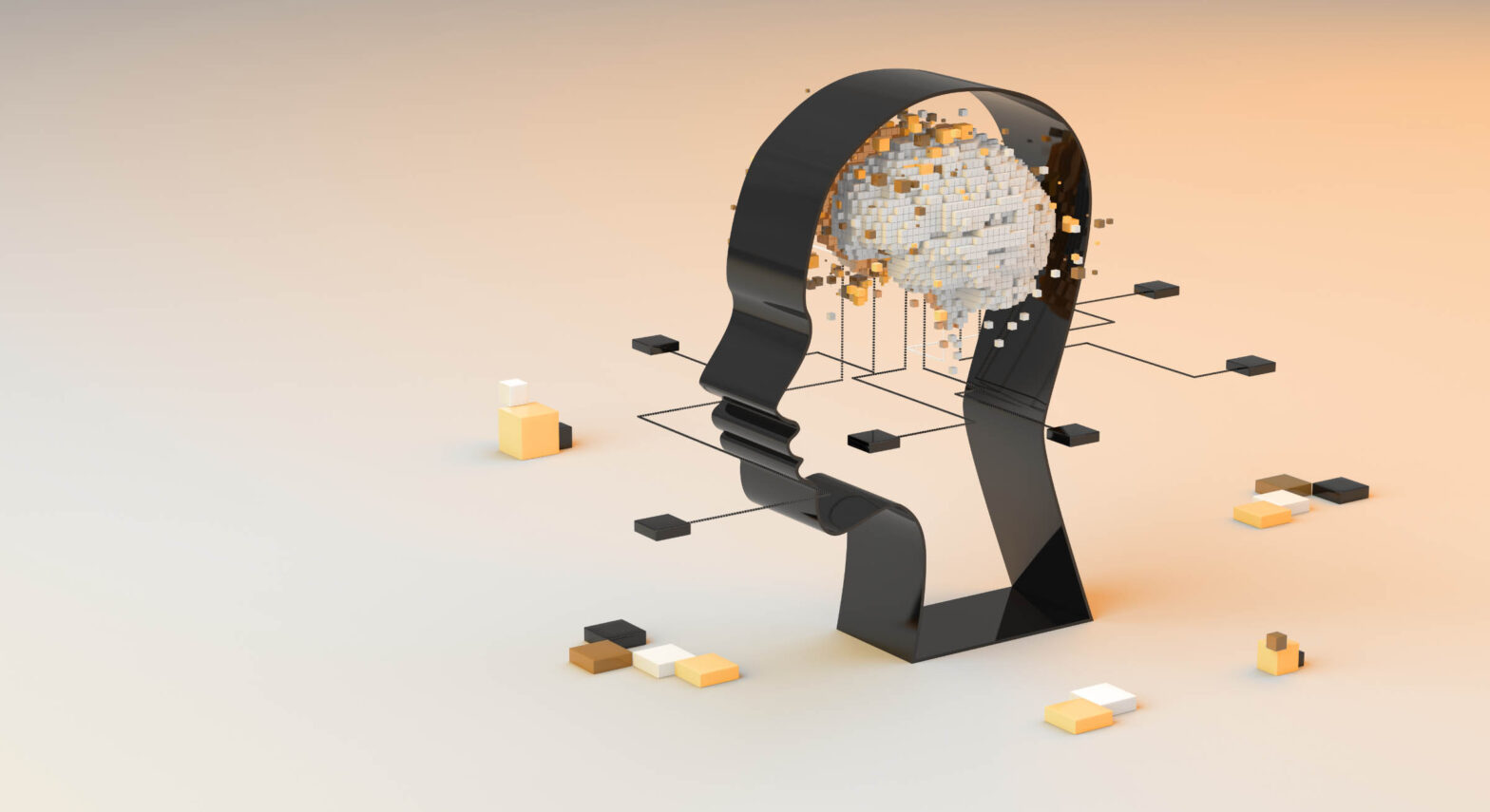The criminal justice system is in desperate need of reform. The U.S. prison population has exploded over the past four decades, with the number of prisoners increasing by 500 percent.
Although some reforms have been implemented there’s still a long way to go before we can say that our justice system is perfect.
But what if artificial intelligence could help us create policies that are more equitable and fairer for all parties? What if it could tell us who would most likely benefit from rehabilitation programs? And what if it could help judges make better decisions when they’re deciding whether someone should be released on bail or detained as a flight risk?
Artificial intelligence is an area of computer science that deals with creating intelligent machines that function in ways that are similar to humans. Since the term artificial intelligence (AI) was coined by John McCarthy in the 1950s, there have been many different applications of this technology.
What is Artificial Intelligence?
Artificial intelligence (AI) refers to the intelligence demonstrated by machines, in contrast to the natural intelligence displayed by humans and other animals. In computer science, AI research is defined as the study of “intelligent agents”: any device that perceives its environment and takes actions that maximize its chance of success at some goal. Colloquially, the term “artificial intelligence” is applied when a machine mimics “cognitive” functions that human beings associate with other human minds, such as learning and problem-solving.
The very basics of AI can be traced back to the idea that machines can mimic how people think. The two most common approaches are statistical and logical. Statistical approaches use data to draw conclusions about future behaviors, while logical approaches use rules-based systems. Both have been used in different ways throughout the years in criminal matters.
Machine learning which is the core of AI, uses algorithms to learn from past experiences, allowing them to make predictions about future events based on their past knowledge and experiences. This process involves building models based on data sets, then testing those models against new data until they reach an acceptable level of accuracy in predicting outcomes (for example: whether someone will commit another crime).
An advantage of machine learning is that it doesn’t require any pre-defined rules or boundaries; rather, it learns through trial-and-error while improving its performance over time as more information becomes available.
Artificial intelligence seems to be the future of criminal justice. As technology advances and becomes more readily available, we are seeing a rapid increase in how this technology is being used to assist law enforcement and judges in their decision-making processes. Every week we hear about another new application of AI, from facial recognition software that predicts if you will commit a crime in the future, to algorithms that can predict when you might be likely to get arrested again if released on bail or parole.
Use of Artificial Intelligence in the Contemporary Society
Although the concept of AI has existed for several decades, it was not until recently that researchers were able to develop systems with even a small amount of human-like intelligence. The field of AI research has been divided into several subfields which focus on different aspects of human intelligence and how it can be replicated using computers.
Artificial intelligence is used in a wide range of applications. These include the processing of big data, speech recognition, machine translation, and fraud detection. The field of AI research has created an enormous amount of buzz over the past few years, particularly due to technology’s rapid development in this era of information and communication. From Siri, Apple’s voice-activated personal assistant, to IBM’s Watson winning $1 Million on Jeopardy and now consulting for businesses, we have been introduced to a taste of what AI can do. AI also has criminal capabilities.
We have seen the effects of artificial intelligence on other industries, such as finance and healthcare. It is clear that AI is a disruptive technology that will change how we live our lives in the future. But how can it benefit people who work within the criminal justice system?
Artificial Intelligence in Criminal Justice
AI can assist us in many aspects of criminal justice such as preventing crime and prosecuting criminals through the use of evidence that was obtained by AI. It can help with sentencing criminals based on their past crimes and it can help with parole or bail hearings by using algorithms that predict whether an individual will commit another crime if released now or later.
Artificial intelligence is increasingly being used to sort through the sea of data that police, prosecutors, and judges are drowning in. For example, AI can help detect patterns in data that humans might not be able to find on their own. And it can help find patterns in data that humans might not even realize exist like when an unknown suspect has committed crimes before, or a suspect’s DNA matches up with evidence found at crime scenes.
While this kind of information isn’t necessarily new, it has been possible for years to use software programs for these tasks. What is different about artificial intelligence (AI) is its ability to learn from its mistakes and adjust itself accordingly as it works through cases. This means that over time, AI will get better at its job than other approaches have been able to do so far; it won’t require manual input from human experts every step of the way (as was previously required).
Artificial Intelligence as a Complementary Tool
Artificial intelligence will not replace criminal justice officers, but it can be a complementary tool that helps them make better decisions and enhance efficiency. As the crime rate rises, so too does the public’s demand for a more effective criminal justice system.
AI can be used to help with investigations, sentencing, and parole. For example, in investigations, AI can help in the collection of evidence and information through the use of facial recognition software which will be able to recognize suspects based on their pictures or biometric data like fingerprints or iris scans.
Artificial Intelligence and Bail
Bail is designed to prevent people accused of crimes from fleeing, but it has a problem: people who are accused of crimes may not be guilty or may have a low probability of fleeing, but they might not be able to pay the bail amount and so they have to stay in jail until their trial, even if they could promise to return for their court date.
This means that innocent people are spending time in jail because they don’t have access to money, which is obviously not good for the person or for society. It also means that people who are guilty could get out of jail before their trial if they can find enough money to pay their bail amount.
AI can also be used to help determine whether someone should be released on bail or detained as a flight risk. If you’ve ever been involved in the criminal justice system, you’ve likely had your bail set based on certain criteria: whether you pose a threat to the community and/or have ties to that community, whether there’s reason to believe you’ll flee prosecution, etc.
But while these criteria work well with humans making bail decisions, they’re not overly scientific. In fact, they’re often considered subjective, relying more on intuition than any real science. And why? Because it’s hard for humans to keep track of all the relevant information about each case without making mistakes along the way.
Using AI instead of humans in this context could solve many problems at once: The technology would be able to make faster decisions (which means less time spent behind bars), it would keep better records for future cases that could arise from its previous ones (and thus improve outcomes), and it wouldn’t get tired from having worked all night long as some human judges do.
Artificial Intelligence and House Arrest
The criminal justice system is designed to protect society from criminals, but it also provides a means of rehabilitation and reintegration. One method of punishment that serves this goal is house arrest, which can be used as an alternative to prison time.
House arrest requires offenders to live at home or in a halfway house for up to two years at a time, depending on their offenses and other factors. The conditions imposed on them during house arrest vary depending on the situation. Some people may be restricted from leaving their homes except for work or school purposes while others may choose to stay indoors most of the time but are allowed visitors between certain hours each day.
House arrest isn’t intended as just another punishment. It is meant as an opportunity for offenders to adjust back into society after committing a crime without being locked away from family members who depend on them financially or emotionally.
Many times people placed on house arrest are required to wear an ankle monitor. These tracking devices use GPS, cellular or other tracking methods to monitor the location of the individual at all times. If the person leaves the assigned perimeter during the assigned hours a law enforcement official can be notified. GPS ankle monitors have become a common, and sometimes controversial, part of house arrest.
While ankle monitors can allow some participants to avoid time in prison, instead working and caring for their family, some believe the stigma associated with the ankle bracelet version of GPS monitoring is difficult on self-esteem and can hamper job opportunities.
Thankfully the team at Talitrix has developed a house arrest solution that offers accurate GPS monitoring in a wristband version that looks just like a smart watch. And because the Talitrix band uses the latest technology they can send tracking data every 15 seconds, giving law enforcement renewed confidence in GPS monitoring. Most of the traditional ankle monitors have much longer lag times.
Talitrix is compiling behavior data and using AI to help criminal justice professionals make better case management decisions.
Artificial Intelligence and Parole Enforcement
The parole process is an important part of our criminal justice system, and it can have a significant impact on people’s lives. It allows for people who have served their time to be released from prison early, so that they can reintegrate into society. By providing them with social services, parole helps reduce recidivism rates and the likelihood of someone committing another crime after being released from prison.
This is where artificial intelligence comes in: it could be used to predict whether or not an individual will break the law again. This information could then be used by parole officers when deciding whether or not to release someone on parole.
AI plays this significant role by analyzing their behavior while they’re incarcerated. Additionally, it can check risk factors such as gang affiliation and drug abuse history before making a decision on whether an inmate should be released back into society after serving time for their crimes (or lack thereof).
How Parole Officers Use Ankle Monitors and Wristband GPS Tracking
If parole officers are using a comprehensive case management system, including ankle or wrist monitors, they can monitor the location and behavior of their parolees. Some of these systems work with a home base station or connect to the parolees mobile phone for tracking.
Talitrix introduced the first independent GPS wrist monitor with the ability to track parolees in real-time, even without a phone or home base station.
The Future of Criminal Justice with Artificial Intelligence Tools
If AI can help parole officers make better decisions about whether someone is ready for release, or if they need more time in prison to work on their rehabilitation. It will also help judges decide who should get bail, and what sentence each offender deserves based on their behavior and other factors that affect their chances of reoffending.
Recording behavior data using a monitoring device will help add more information to that decision making process.
A judge’s job has been changing for decades as technology changes how they do things like research case law, but now it can help us with sentencing guidelines too. This means less bias in sentencing based on race or gender because judges can use data from past behavior and cases when making decisions about how much time someone should serve.
Possible Risks in Relying Too Much on AI-generated Predictions
There are some dangers in relying too much on AI-generated predictions. AI can be biased and there have been past examples when AI reflected the biases of its creators. This is especially true if those creators are law enforcement officers or judges who use machine learning to predict whether someone has committed a crime before they’ve been convicted by a jury (or even charged with one).
Another concern is that AI systems might make mistakes such as misclassifying an innocent person as guilty. This can be based on slightly similar patterns between their behavior and those of known criminals because the underlying data sets used to train them aren’t accurate enough. Criminal justice professionals need to be careful not to misassociate behavior across any group of individuals, especially those that have been historically marginalized. It’s important that we gather as much data as possible to inform every decision and that we make sure that data is not biased by the creators of the system or the collectors.
Experts Think AI Could Greatly Improve Outcomes
There’s no denying that artificial intelligence holds great potential to improve the efficiency and effectiveness of criminal justice. As the technologies improve, we can improve recidivism rates and correct societal wrongs by bringing new perspectives into decision-making processes.
This is just the beginning of artificial intelligence in criminal justice. As technology continues to develop, we’re likely to see more progress and innovation in the field of law enforcement and beyond. The potential uses are endless from tracking parolees to preventing crime before it happens. The use of GPS monitors could help us keep track of parolees and other participants after their release so law enforcement can keep victims safe.
Imagine if AI could help prevent wrongful convictions. Or provide an extra layer of oversight for police officers. What if AI could detect biases or uncover new evidence?
While we may be a few years away from reaching the full AI potential, we know that today AI can provide judges and district attorneys with new data that can lead to better decision making. And better decision making means a better future for all of us.







